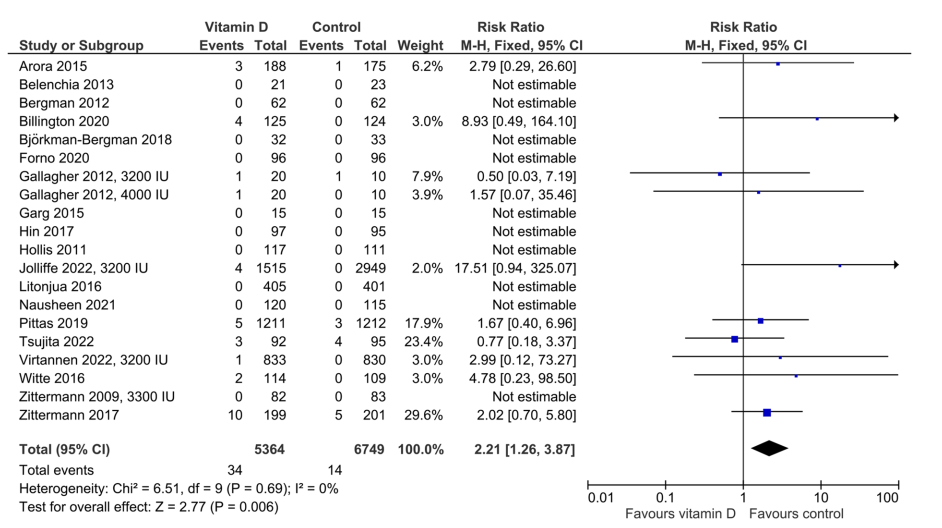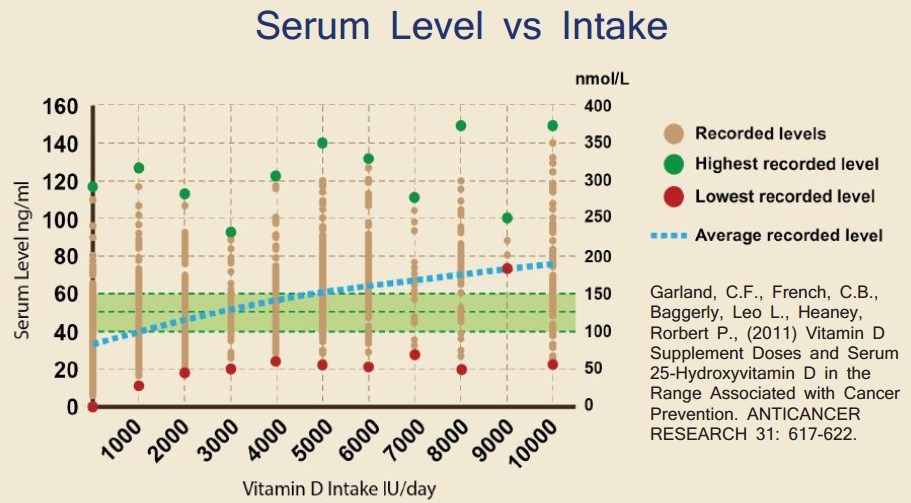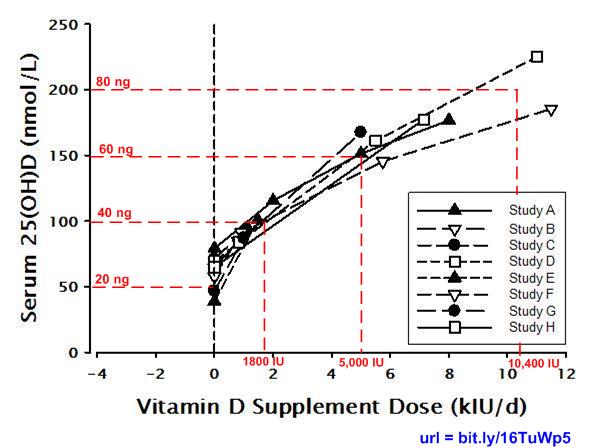4,000 IU of Vitamin D - many pages
111+ Vitamin D Life pages with 4,000 or 4000 in the title
This list is automatically updated
{LIST()}
4000 IU daily - rare risk of hypercalcemia - meta-analysis Feb 2023 (can reduce risk by subtracting Calcium or adding Vitamin K2)
Long-term supplementation with 3200 to 4000 IU of vitamin D daily and adverse events: a systematic review and meta-analysis of randomized controlled trials
European Journal of Nutrition February 2023
Armin Zittermann, Christian Trummer, Verena Theiler-Schwetz & Stefan Pilz
Note: No indication of how much Calcium (food or supplement) each group was taking
Nor if any vitamin K2 was taken (which reduces Calcium in the blood)

Purpose
The upper tolerable intake level for vitamin D in the general population has been set at 4000 international units (IU) daily, but considerable uncertainty remains. We summarized the reported harmful effects of a daily vitamin D supplement of 3200–4000 IU in trials lasting ≥ 6 months.
Methods
We performed a systematic review and meta-analysis of randomized controlled trials in several databases and identified 22 trials reporting safety data. Parameters of calcium metabolism, falls, hospitalization, and mortality were assessed.
Results
The selected trials comprised a total number of 12,952 participants. All trials used supplemental vitamin D3. The relative risk (RR) of hypercalcemia in the vitamin D vs. control arm was 2.21 (95%CI: 1.26–3.87; 10 studies), with a vitamin D-induced frequency of hypercalcemia of 4 cases per 1000 individuals. Subgroup analysis in trials with > 100 and ≤ 100 study participants revealed an RR of 2.63 (95%CI: 1.30–5.30; 7 studies) and 0.80 (95%CI: 0.24–2.62; 3 studies), respectively (Pinteraction = 0.06). Risks of falls and hospitalization were also significantly increased in the vitamin D arm with an RR of 1.25 (95%CI: 1.01–1.55; 4 studies) and 1.16 (95%CI: 1.01–1.33; 7 studies), respectively. Risks of hypercalciuria, kidney stones, and mortality did not differ significantly between study arms. The quality assessment revealed a high risk of incomplete reporting of safety-related outcome data.
Conclusion
Supplemental vitamin D doses of 3200–4000 IU/d appear to increase the risk of hypercalcemia and some other adverse events in a small proportion of individuals, indicating that this dose is not completely safe. In future studies, rigorous reporting of safety-related outcomes is needed when using moderately high doses of vitamin D.
📄 Download the PDF from Vitamin D Life
Vitamin D Life – Consensus Vitamin D category contains:
{include}
Charts from Overview Vitamin D Dose-Response 4,000 IU ==> 36 or 55 ng
- Same dose of vitamin D for everyone is virtually impossible - Dec 2015 has the following, from 36 studies



